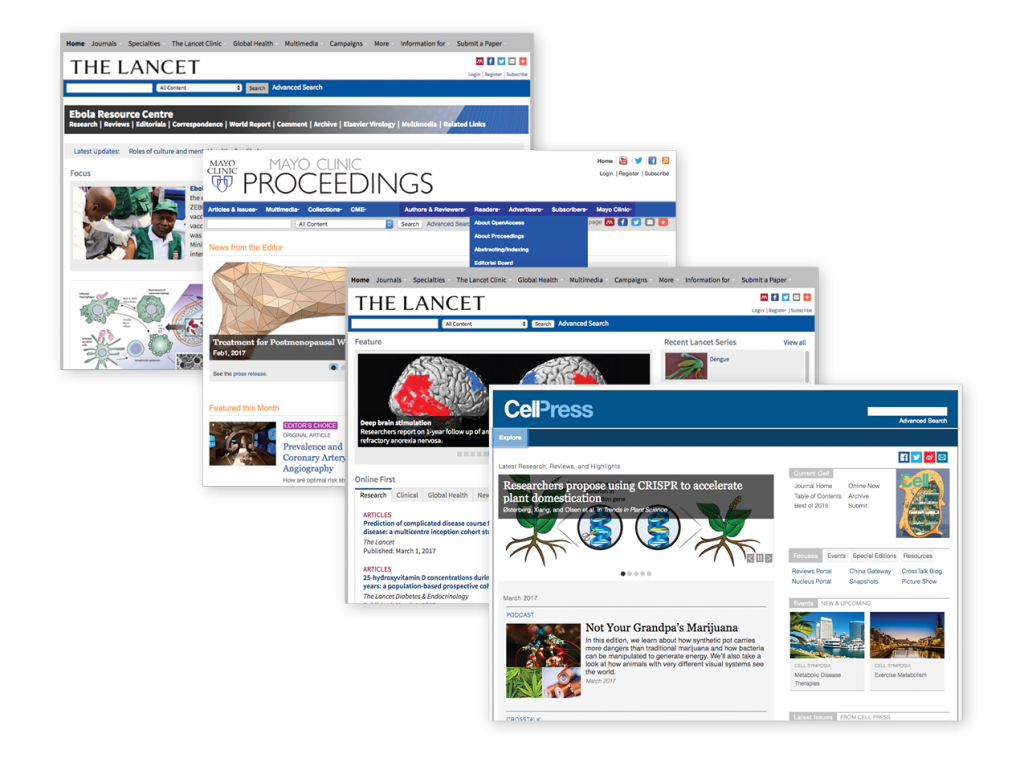Ensuring a Profitable & Flexible Digital Future
Migrating 700 publications, integrating 25 legacy systems, and enabling sustainable growth

Challenge
As Elsevier grew, so did their accumulation of systems, platforms, and publishing technologies.
With disparate systems that could not communicate with one another (including several of Elsevier’s own home-grown digital publishing platforms) and the increasing annual costs and inefficiencies required to maintain them, the company was faced with a complicated and inflexible digital future.
Solution
Elsevier migrated their largest and most complex in-house publishing platform to the Atypon Experience Platform, the industry’s most fully featured online publishing platform. The migration included 700 publications, their accompanying websites, and 2.3 million journal articles. Atypon Experience Platform ingested content in Elsevier’s own DTD formats, saving the company a considerable investment in content conversion.
Atypon Experience Platform gives Elsevier powerful, flexible control over their content and its presentation as well as their marketing operations and licensing activities. The platform’s modular design facilitated the integration of more than 25 of Elsevier’s legacy systems, including a learning management system (LMS), three billing systems, an access and entitlements system, an email distribution product, content authoring and production systems, and the company’s proprietary search engine.
The migration also improved the publications’ website designs with Atypon Page Builder, a drag-and-drop, widget-based user interface (UI) and user experience design (UXD) tool. Most site designs were refreshed, while older ones were completely redesigned with a modern look and feel. Many pages that had been manually edited were automated, freeing up many hours of web managers’ time each week.
Results
Elsevier’s most valuable assets have become more profitable and the publisher is meeting key performance objectives more easily.
Since Elsevier’s transition of nearly one-third of its journal publications to Atypon Experience Platform:
- Average site usage is up significantly as a result of more engaging site designs, dynamic content targeting, and improved discoverability.
- Elsevier staff are independently designing and creating new websites using Atypon Page Builder, without needing Atypon’s or their own IT department’s support. For example, at the height of both the ebola and zika virus epidemics Elsevier was able to quickly launch resource centers as a timely public service.
- New publications are being created and added regularly.
- Elsevier has improved their online publishing and advertising efficiencies considerably, and is getting a significantly higher ROI compared to when they maintained their own in-house platforms.
Looking for the right online publishing system?
Atypon houses more websites and content types than any other platform.






